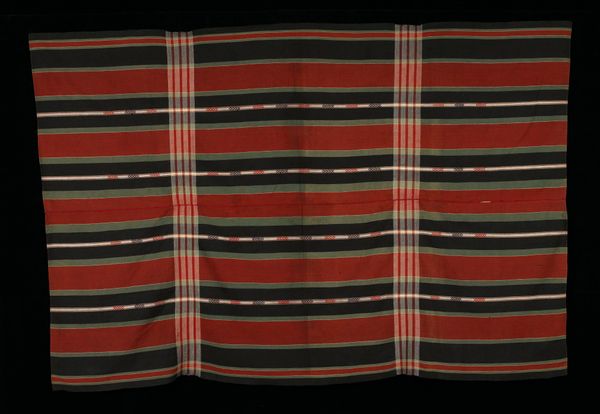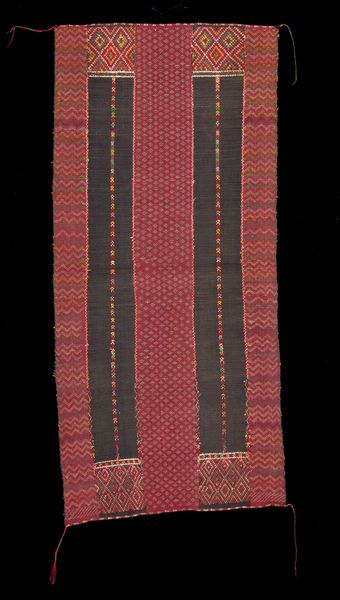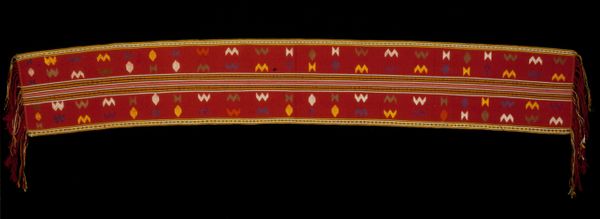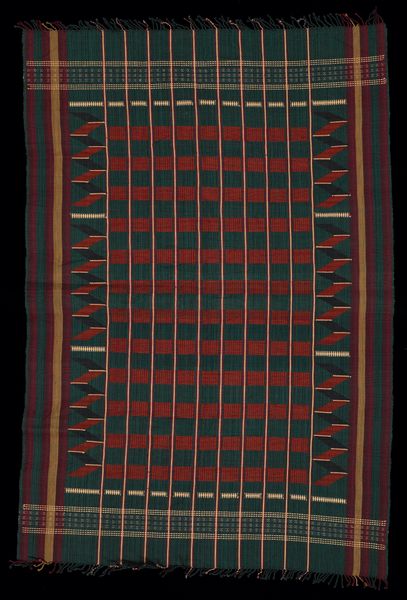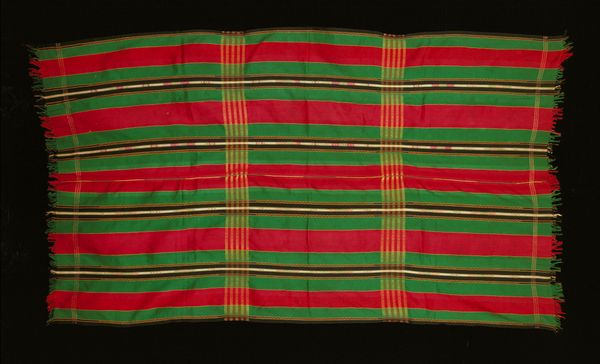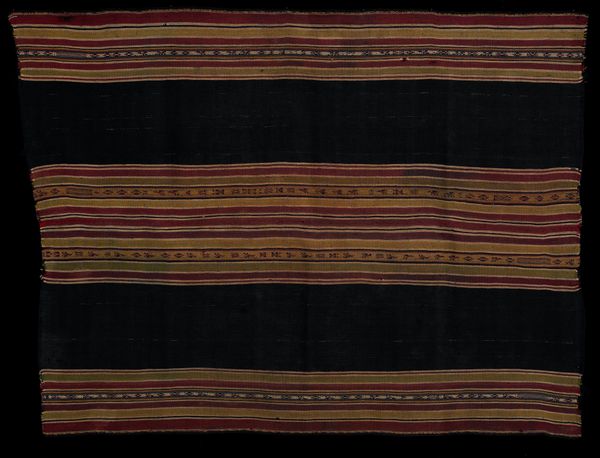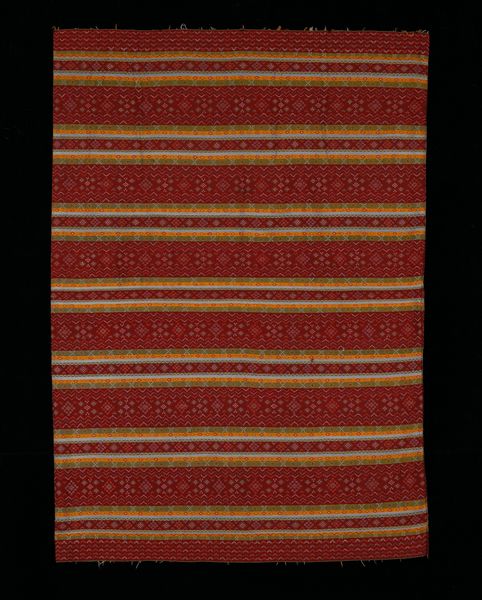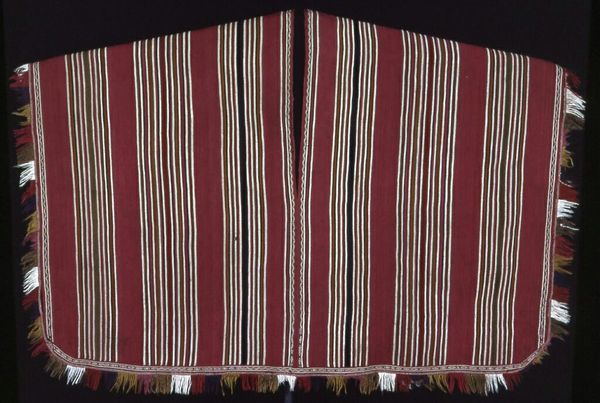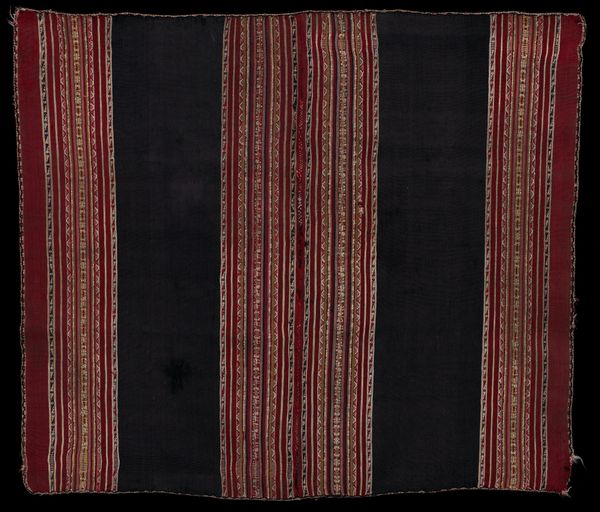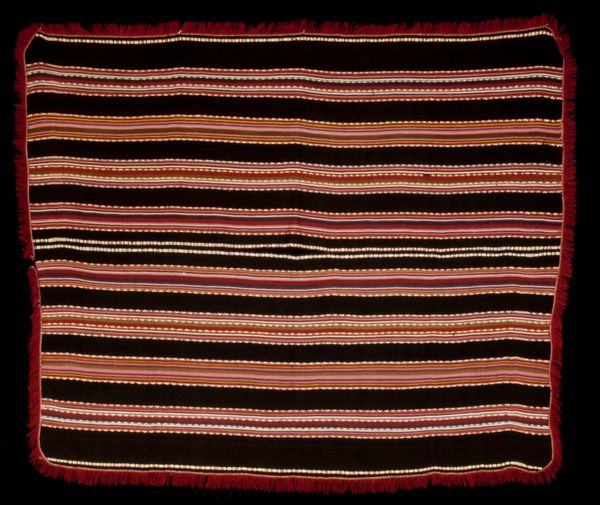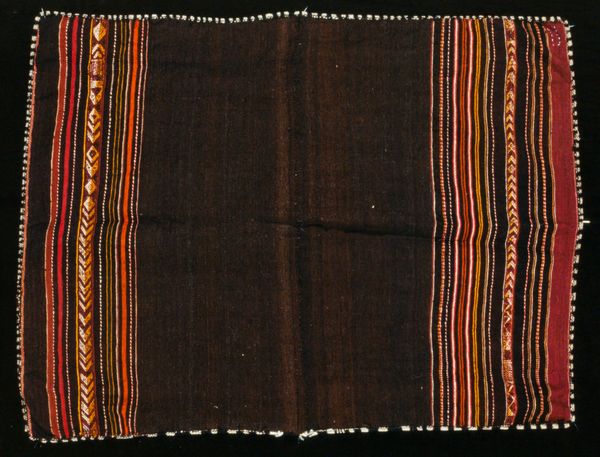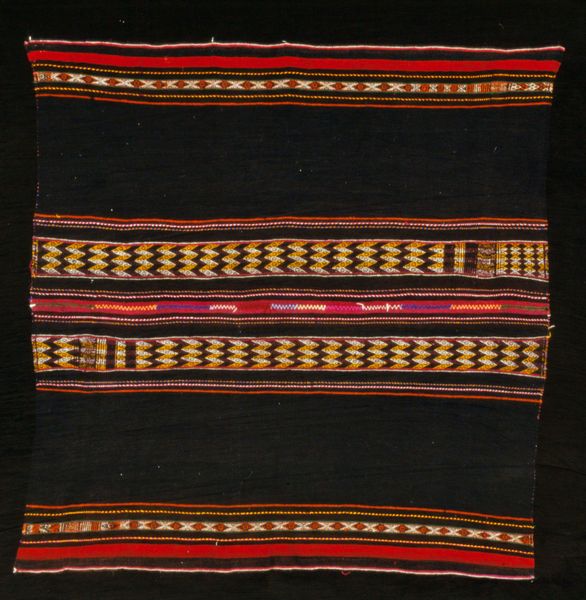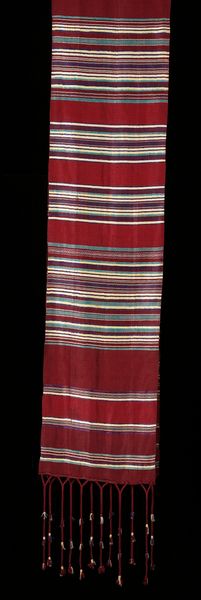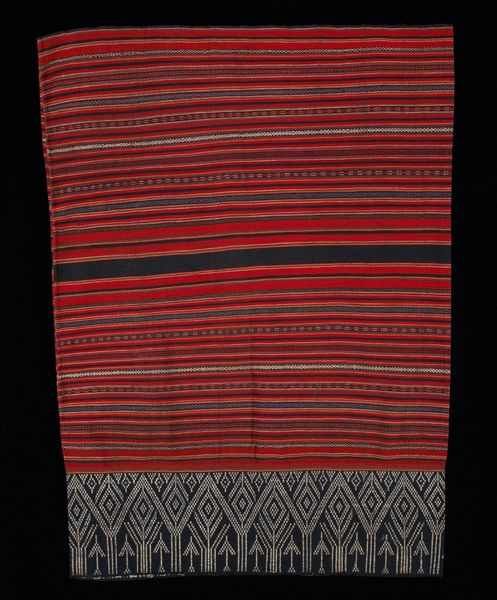
fibre-art, weaving, textile
#
fibre-art
#
asian-art
#
weaving
#
textile
#
geometric
#
textile design
Dimensions: 72 x 24 in. (182.88 x 60.96 cm) (with fringe)
Copyright: Public Domain
Editor: Here we have a Haka Chin woman's ceremonial shawl, the date's unknown, but it's made of silk, cotton, and other fibers using weaving techniques. The red and gold tones feel very regal and purposeful. How should we approach interpreting a textile like this? Curator: Well, we need to consider its materiality first and foremost. The use of silk and cotton tells us something about access to resources, trade networks, and potentially, the social standing of the wearer. This isn’t just a decorative object; it represents labor and material exchange. How do you see the weaving technique contributing to the meaning? Editor: It seems quite intricate, suggesting a significant time investment. Perhaps that contributes to its ceremonial purpose? Curator: Precisely! The act of weaving, the creation of pattern and design, is not just a skill but a cultural practice. Consider the labour involved; how many hands contributed? Was this made individually, or was this communal work? The answers shed light on the social and economic relationships within the Haka Chin community. The "pattern-and-decoration" element pushes against Western art hierarchies, arguing that these crafted objects carry just as much intellectual and cultural weight as painting or sculpture. What questions does it raise for you? Editor: It makes me wonder about the role of women in producing these textiles and the value placed on their labor. Also, what kind of loom was used? The tension and precision seem remarkable. Curator: Excellent points! Understanding the technical processes – the loom, the dyeing methods, the specific weave – helps us move beyond mere aesthetics and delve into the material realities of its production and the ingenuity involved. Editor: I hadn’t considered all the layers embedded in the process itself, rather than just viewing it as a finished product. Curator: Seeing art through a material lens, we can reconsider assumptions about artistic value and the role of craft in cultural expression.
Comments
No comments
Be the first to comment and join the conversation on the ultimate creative platform.
